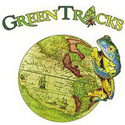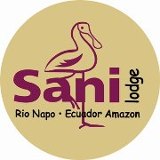Sani Lodge Pt.2 – The Place
Each lunch and dinner course is started with a nice bowl of soup.
The lodge grounds themselves offer comfortable cabins, a nice dining hall with 3 meals a day, and a very relaxing lounge overlooking the lagoon. The lounge provides great views of birds and has the bar. Most visitors come for several days and hook up with a guide who takes them on whichever sort of activities that suits the desires of the group. Being the oddball that I am I arranged a 2-week stay and spent my time on solo hikes around the trails in search of frogs and snakes – and photo ops. My human contact was during meals and down time where I chatted with staff about herps and lodge operations and with guests who were intrigued (or held hostage) by my constant herp lessons. Sani is an excellent place to learn about community and get an introduction in rainforest systems. It is easy to get into and out of for incorporation into a larger tour of Ecuador. It is also a great place that allows tourists to get an accurate short-term immersion between guests and hosts.
The spacious lounge is a great place to watch birds, have a drink, read, or just lay in a hammock after busy days (and nights) hiking.
All too often tourists either want or get an isolated view of the Amazon. Sometimes tourists want to maintain their comforts of home and cocoon themselves while demanding to see macaws, monkeys, and jaguars. Some lodges will cater to these types, which I find sad. I would rather these travelers that lack spirit and adventure to just watch TV or look at pictures in a book. For those willing to accept that not everyone in the world has constant electricity, hot water, or a place that has insects everywhere (actually quite amazing) Sani is a real place. You will see how life is in other parts of the world – in the relative comfort as a paying tourist – while dealing with the uncertainty of wildlife behaviors and subject to the whims of weather. I encourage people to travel into the Amazon so that they can see what it is that needs saving at the same time realizing things are much more complex than simple catch phrases or programs. I hope to highlight ways and places to see and for this I recommend that Sani be considered in your quest to see the world.
A pair of hoatzins resting in a tree as seem from the lounge.







3 comments
Hmmm. Having difficulties with the black caiman photo. How I would like to be able to click it to get a better size!
/Lars
Lars, the photos are not clickable. They are embedded flash files. Considering the relative uniqueness of my subjects, especially herps, I decided to do this to dissuade theft. That’s not a good caiman shot (lighting sucked) but it is the only full body shot I had. I’ll send you a larger version to look at.
[…] I’ve already mentioned the reptile and amphibian diversity of Ecuador. It is an amazing place to be sure. But for the reptile installment of this series I’m going to try something a little different. Instead of getting into the science of my finds I’m going to write about the encounters and the photo sessions. It should be obvious by now that I like to take photos of these animals. That means that I can have a few dozen shots or more of the same animal. If the animal and photo conditions are right then I’ll keep shooting, changing lighting, aperture settings, and compositions and poses. I do this because it’s not until reviewing lots of images that you can see what worked and what didn’t. I’d rather have the luxury of ignoring lesser shots while having a gallery quality keeper than getting home and seeing that the shot I thought was cool really just doesn’t cut it on serious evaluation. Little things like crossed toes, misplaced twigs and leaves, little clumps of dirt on the animal, and other imperfections are easily missed during a live shoot. My attention is usually pulled towards keeping the animal from disappearing off into the forest. In the case of some of these animals it took many years to come across a particular species so it will be tough to get a re-shoot in the future. Some animals just don’t lend themselves to exciting images. Most don’t offer any cooperation. Actually, it seems to take the convergence of a cooperative animal, luck, locating the perfect scene/backdrop, luck, time to experiment, assistance, and an eye to balance composition against the natural world of the animal. Oh, and a little luck. […]